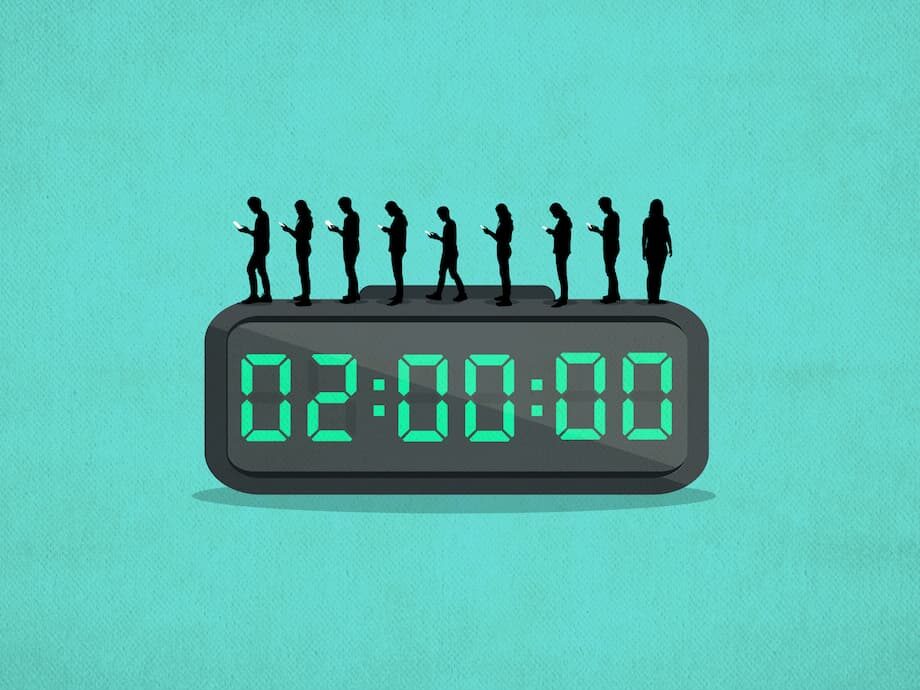Toyoake tests a two hour smartphone guideline
In a country where phones are the first and last screens many people see each day, a small city in central Japan has asked residents to try something new: cap personal screen time at two hours. Toyoake, in Aichi prefecture, has turned a private worry into public guidance after complaints about late night scrolling, distracted children, and families speaking less at home. The guideline covers children, teens, and adults, and it targets discretionary time outside work and school. Young people in Japan spend more than five hours a day online on weekdays, according to a government survey by the Children and Families Agency, and many say they want to cut back. Several Gen Z volunteers tried living within a two hour limit. Some found the rule tight. Others discovered unexpected time for reading, study, and exercise. The experiment has now become city policy and is drawing national attention.
- Toyoake tests a two hour smartphone guideline
- Why the city moved now
- Young voices try the two hour challenge
- Is two hours realistic
- Sleep, focus and mental health
- Design choices that keep people scrolling
- What Japan has tried before and how other countries compare
- How families and individuals can set healthy limits
- What to Know
On September 22, the city assembly approved a nonbinding ordinance that urges residents to keep personal phone and screen use to about two hours daily. The guideline takes effect on October 1. It carries no penalties and excludes schoolwork, job tasks, and daily necessities such as maps or banking. Families are encouraged to agree on evening cutoffs at home. Primary school children are advised to avoid smartphones after 9 pm, while junior high students and older, as well as adults, are asked to switch off by 10 pm. Officials call the measure a nudge, not a mandate, and say it is the first citywide guidance in Japan to cover all ages. The proposal drew sharp criticism during public consultation, with roughly eight in ten comments opposed, calling the idea unrealistic and intrusive. Supporters counter that it is a conversation starter about sleep and the quality of time online.
Masafumi Koki, the mayor who championed the measure, has tried to calm fears that the city will police private behavior. He says the goal is to encourage reflection about late night scrolling and time lost with family.
Masafumi Koki, mayor of Toyoake: “People thought we were trying to impose a strict time limit. That is not the case at all. We are not trying to control anyone.”
City hall also plans to offer advice for parents and guardians on setting household rules. The aim is less about counting minutes and more about routines that protect sleep and build healthy media habits for children and adults alike.
Why the city moved now
Teachers and local officials have reported children struggling in class after late night streaming or gaming, and a rise in truancy linked to disrupted sleep. Parents say family conversations are shorter and mealtimes are quieter. Health authorities point to well known links between chronic sleep deficits and problems in mood, concentration, immunity, and weight gain in children. Adults are not immune, since long evening sessions on social media or video sites delay bedtimes and shorten rest. The city’s message, repeated by the mayor, is that phones are useful and central to daily life, yet unbounded use crowds out sleep, study, and face to face time.
What counts as screen time under the guideline
The two hour figure applies to leisure use, not tasks tied to work, school, or daily logistics. Messaging, video, social feeds, short videos, and games count toward the two hour budget. Watching a lecture for class or scanning a work schedule does not. The evening cutoffs are advisory. No one is fined. The city argues that public guidance can help families who want a baseline rule but have struggled to set one on their own.
Officials say the guideline responds to a broader pattern, not just a youth issue. Adults also sacrifice sleep and family communication in the hours after work when phones become the default entertainment. By turning a private concern into an open, citywide conversation, leaders hope residents will redesign the evening hours around rest and connection.
Young voices try the two hour challenge
For many Gen Z residents, two hours felt like a steep cut. Tokyo office worker Shoki Moriyama usually spends about eight hours a day on his phone. During a weeklong self test, he tracked usage and aimed for the city’s target. He ended one day at one hour and fifty minutes. He said the clock forced choices, like avoiding idle scrolls and saving messages for scheduled breaks.
Shoki Moriyama, 20s, office worker in Tokyo: “Sticking to two hours was difficult. When I did it, I used the extra time for reading, study, and exercise.”
His colleague, Tomomi Hanaoka, also kept her phone within the limit, though she found two hours very short. A university student, Akari Saito, noticed a different effect. Strict limits triggered a sense of scarcity and made her want to reach for the phone. Still, she valued the idea of measuring the quality of screen time, not just the quantity.
Akari Saito, university student: “Setting a limit made me want to use my phone more, but it helped me think about whether my time online felt purposeful.”
Another participant, Yuri, already sets boundaries during exam periods. She prefers personal rules to strict external restrictions and sees the city’s approach as an invitation to design her own plan. Aya, a university student, cut her usage by about sixty percent during the challenge and said her days felt more meaningful as a result. Several participants said the lack of penalties kept the focus on internal motivation instead of fear of punishment.
Is two hours realistic
For most people, phones are not only for social feeds. They provide maps, transit schedules, payments, banking, tickets, messaging, cameras, notes, and podcasts. That is why a two hour ceiling can sound harsh. Toyoake’s rule tries to solve this by limiting only discretionary time and excluding school and work. Residents are encouraged to rethink recreational use rather than utility. In practice, that means keeping the essentials while trimming autoplay video, endless feeds, and background scrolling during the night.
Estimates of global phone use vary, but several analyses place average daily smartphone time around four hours, with Gen Z often logging six hours or more. Japan is frequently ranked toward the lower end in time spent on phones compared with many countries. At the same time, government data show that young people in Japan spend just over five hours a day online on weekdays across all devices. The two hour guideline sits against those numbers as a clear but voluntary line to promote rest during the evening.
A time budget changes behavior because it forces trade offs. Messaging with friends might still fit. Long video sessions likely do not. People who tested the limit said the constraint pushed them to be intentional, for example by downloading playlists for a commute instead of browsing, or replying to messages in set windows instead of every few minutes.
Sleep, focus and mental health
Late night scrolling hurts sleep in two ways. The mind stays alert when content is fast, emotional, or interactive. That stimulation delays the body’s natural winding down. Screen light may also affect circadian rhythms at night by signaling wakefulness. The result is shorter, lighter sleep and groggier mornings. In children and teens, short sleep is linked to attention problems, low mood, weaker immune response, and weight gain. Adults report brain fog and lower productivity after late nights on phones, even if total hours in bed do not drop much.
Mood can suffer as well. The habit of doomscrolling steers attention toward negative news and contentious posts. A psychiatrist who studies the pattern says the human mind has a negativity bias, so it is easy to fall into a loop of anxious scanning that leaves people exhausted and low on energy.
Dr. Ashok Khanojia, psychiatrist: “Doom scrolling feeds on the mind’s negativity bias, which fuels anxiety, exhaustion, and emotional burnout.”
Researchers have linked heavy phone use with diminished well being in some groups and found that cutting back on smartphone internet use can improve mood and focus. Participants who break up long browsing sessions often report feeling lighter, more present, and more able to concentrate on demanding tasks. These changes show up within days when habits shift in the evening hours.
Breaking the doomscroll habit
Small structural changes can interrupt the cycle. People who have success often remove triggers first, then add routines that make the new habit automatic. Many find it easier to change the environment than to will their way through every impulse.
- Set a nightly cutoff time and plug the phone in to charge outside the bedroom.
- Turn off autoplay and disable push alerts for social apps that do not require immediate attention.
- Use Do Not Disturb and filter contacts so only priority calls ring at night.
- Move time sink apps off the home screen or group them into a folder named with a goal, such as Study or Sleep.
- Replace late scrolling with a simple routine like a printed book or a podcast with a timer.
- Track nightly usage with the phone’s digital wellbeing tools and set app timers for a soft stop.
Design choices that keep people scrolling
Phones feel sticky for good reasons. Features such as infinite scroll, pull to refresh, and notifications exploit the brain’s appetite for novelty and variable rewards. Each swipe holds the promise of something new, and the next item arrives instantly. Autoplay video removes the pause that might prompt a person to stop. These tools are not evil, but they tilt time toward passive consumption. Recognizing the design is the first step to regaining control.
When people remove the frictionless path, they reclaim minutes. Turning off auto playing feeds, switching video to manual play, and choosing a single time window for messages create helpful speed bumps. Even small shifts, like setting the lock screen to a blank image or switching the phone to grayscale in the evening, can reduce the urge to check.
What Japan has tried before and how other countries compare
Toyoake’s guideline is not Japan’s first attempt to manage screens. In 2020, Kagawa prefecture issued a local rule urging families to limit children to one hour of gaming on weekdays and ninety minutes during school holidays, and to avoid smartphones after 9 pm for younger teens and 10 pm for older teens. That policy, like Toyoake’s, was advisory. The new ordinance goes further by including all residents and by focusing on overall leisure screen time.
Other governments are testing different levers. Some countries have issued guidance for schools to restrict phones to improve behavior in class. Others are debating age limits for social media. Education ministries in several places have announced bans on digital devices inside classrooms. These steps focus on the school day. Toyoake’s approach focuses on the evening, when phones displace sleep and family time. The legal posture is modest. The city sets expectations, invites households to adopt them, and offers support, without turning phones into a policing issue.
How families and individuals can set healthy limits
Experts agree that sustainable change comes from a combination of clear rules, simple tools, and compelling alternatives. A family that writes down a shared plan will likely stick to it longer than one that relies on verbal reminders. Individuals who swap one nightly habit for another, like a walk after dinner or a chapter of a book before bed, are more likely to keep the gains.
- Define the why. Pick one benefit you want, such as better sleep, more study time, or more conversation at dinner.
- Use a budget. Set a daily two hour target for discretionary screen time, and reserve it for what matters most to you.
- Schedule phone check windows. For example, check messages at the top of the hour for five minutes, then put the phone away.
- Charge the phone outside the bedroom. Use a basic alarm clock to avoid the morning pick up.
- Disable nonessential notifications and remove badges that create a sense of urgency.
- Turn off infinite scroll or autoplay where possible. Use the timer in video apps to stop playback at bedtime.
- Lean on low friction alternatives. Print maps before longer trips, carry a book, or download podcasts to avoid browsing.
- Protect the evening. Set a personal cutoff one hour before sleep and switch the screen to grayscale to reduce allure.
- Mind your hands. Long sessions can strain fingers and wrists. Switch hands, use a stand, and take breaks to avoid pain.
- Track progress weekly. Celebrate small wins, and adjust the plan when exams or project deadlines change your needs.
What to Know
- Toyoake, a city in Aichi prefecture, approved a nonbinding ordinance urging residents to keep discretionary screen time to about two hours daily.
- The guideline takes effect on October 1 and includes suggested evening cutoffs, 9 pm for primary school children and 10 pm for older students and adults.
- No penalties apply. The city aims to spark family conversations about sleep, health, and the quality of time online.
- Public feedback has been mixed, with a large share of residents criticizing the idea as unrealistic while others support it as a useful nudge.
- Young Japanese spend just over five hours a day online on weekdays across devices, and many Gen Z participants who tried the two hour limit reported gains in sleep, study, and exercise time.
- Health concerns driving the policy include sleep disruption, attention problems, and mental strain linked to doomscrolling and late night use.
- Japan previously saw a local gaming guideline for children in Kagawa in 2020. Other countries are testing school phone rules and age based measures.
- Behavioral strategies that work include setting a nightly cutoff, disabling autoplay and nonessential notifications, and charging phones outside the bedroom.












